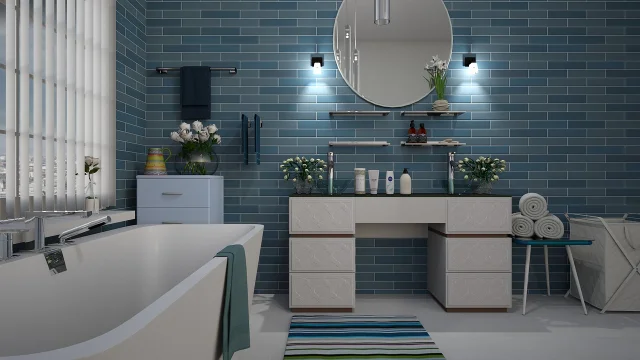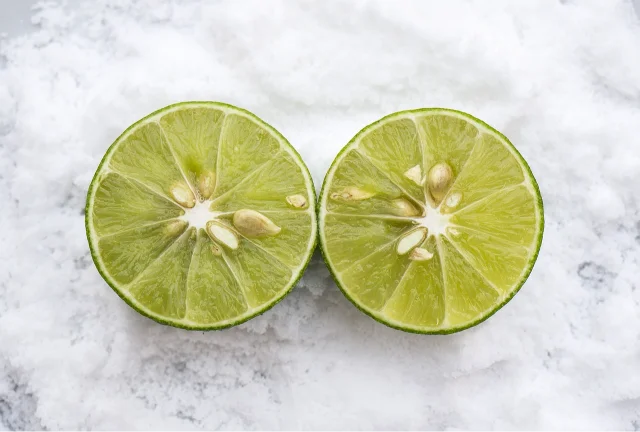How to remove rust from bathtub? Rust stains in bathtubs can be unsightly and difficult to remove, but with the right approach, it is possible to restore your tub’s original shine. Whether you’re dealing with porcelain, acrylic, or fiberglass, understanding the nature of rust and the most effective cleaning methods is key. This article will explore various techniques for removing rust from bathtubs, ranging from natural remedies to commercial solutions, as well as preventive measures to keep rust at bay.
Contents
- 1 Key Takeaways
- 2 Understanding Rust Stains in Bathtubs
- 3 Natural Remedies for Rust Removal
- 4 Commercial Solutions and Techniques
- 5 Alternative Rust Removal Methods
- 6 Preventive Measures and Maintenance
- 7 Conclusion
- 8 Frequently Asked Questions
- 8.1 Can I use lemon and salt to remove rust stains from any bathtub?
- 8.2 What is a safe and gentle method for cleaning rust stains in my bathtub?
- 8.3 How do I remove rust stains from a porcelain bathtub?
- 8.4 What commercial solutions are best for removing tough rust stains from my bathtub?
- 8.5 Can cream of tartar be used to remove rust stains?
- 8.6 Is there an alternative to lemon juice for rust removal if I don’t have any at home?
Key Takeaways
- In most circumstances, simple and cheap solutions are enough to help with how to remove rust from bathtub.
- Lemon and salt can effectively remove red rust stains from bathtubs, but should be avoided on stone and delicate materials like acrylic and fiberglass.
- Baking soda paste is a gentle cleaning option suitable for all types of tubs and is particularly useful for black stains caused by mold.
- For tough rust stains, commercial cleaners designed for rust removal or mechanical methods like pumice bars can be effective.
- Alternative methods such as a cream of tartar and vinegar mixture or a citric acid powder paste offer additional options for stubborn rust removal.
- Regular cleaning and maintenance, including the use of protective coatings and sealants, can help prevent rust formation and avoid the need for more intensive cleaning.
Understanding Rust Stains in Bathtubs

Identifying Different Types of Rust Stains
Rust stains in bathtubs can be perplexing and stubborn, but identifying the type of rust stain is the first step towards effective removal. Surface rust stains are usually caused by iron in the water supply and are characterized by a reddish-brown discoloration. These are often easier to remove and respond well to natural remedies. On the other hand, embedded rust stains may result from prolonged exposure to water and metal objects, requiring more aggressive treatments.
- Surface Rust: Reddish-brown discoloration, often from iron in water
- Embedded Rust: Deeper stains from long-term exposure and metal contact
It’s crucial to determine the rust type before choosing a cleaning method, as this will guide you to the most suitable solution and prevent damage to your bathtub’s surface.
Remember that the right approach to rust removal not only depends on the type of stain but also on the material of your bathtub. Whether it’s porcelain, enamel, or acrylic, each material may react differently to various cleaning agents.
The Science Behind Rust Formation
Rust formation on bathtubs is a common issue that arises from a chemical reaction between iron, oxygen, and moisture. When these elements come into contact, they initiate a process known as oxidation, which results in the reddish-brown substance we recognize as rust. Understanding this reaction is crucial for effective rust removal and prevention.
- Iron in the bathtub material or water supply
- Oxygen from the air or water
- Moisture from steam, splashes, or leaks
These three components must be present for rust to form. In the absence of one, the reaction cannot proceed. For instance, reducing moisture can significantly slow down rust formation.
While commercial cleaners can be effective, knowing the science of rust can help you choose the right solution and apply it more effectively.
It’s important to note that not all rust formations are the same; some may be superficial and easy to clean, while others penetrate deeper into the material, requiring more aggressive treatment. Regular maintenance and early intervention are key to managing rust and keeping your bathtub looking new.
Materials to Avoid When Cleaning
When embarking on the task of removing rust from your bathtub, it’s crucial to be aware of the materials that could cause more harm than good. Avoid using harsh chemicals that can damage the tub’s surface or create hazardous fumes, especially in poorly ventilated spaces. For instance, mixing bleach with acidic solutions like vinegar can lead to toxic fumes and should never be attempted.
- Bleach: Risk of toxic fumes when mixed with acids
- Abrasive scrubbers: Can scratch and damage tub surfaces
- Ammonia-based cleaners: May discolor textiles and create harmful gases
Remember to always wear protective gear, such as gloves and goggles, to safeguard your skin and eyes from any splashes or spills of cleaning agents. Additionally, protect your bathroom textiles and any wooden surfaces from potential damage or discoloration by these cleaners.
Natural Remedies for Rust Removal

Lemon and Salt Technique for Red Stains
The combination of lemon and salt is a powerful duo for tackling red rust stains in your bathtub. Cut a lemon in half and press the cut side into coarse salt. This creates an abrasive surface that, when rubbed onto the stain, helps lift it away. The citric acid in the lemon works to dissolve the rust, making it easier to remove.
For best results, rub the lemon half vigorously on the affected area and rinse thoroughly afterward. If the stain persists, you may need to repeat the process to completely eliminate it.
An alternative approach involves creating a paste with equal parts borax and lemon juice. Apply this mixture to the stain, let it dry, and then rinse. Repeat as necessary until the rust is fully removed. Remember, while this method is effective, it’s important to avoid using lemon on stone surfaces and to steer clear of abrasive materials like salt on more delicate tub materials such as acrylic and fiberglass, as they can easily scratch.
Vinegar as a Rust Remover
Vinegar is not just a staple in the kitchen but also a powerful ally in the battle against rust stains. Its acidic nature reacts with the rust, allowing it to dissolve and be wiped away after a soak. For effective rust removal, follow these simple steps:
- Submerge or apply vinegar to the rusted area.
- Allow the item to soak for at least 30 minutes; more severe rust may require up to two hours.
- After soaking, gently scrub the surface with a soft-bristled brush.
- Rinse the item with water to reveal a rust-free surface.
Remember, while vinegar is effective, it may cause metal to appear blackened after soaking. This discoloration is temporary and should vanish after rinsing.
For larger items or those with electrical components, spraying vinegar or using a vinegar-soaked cloth may be more practical. If you’re dealing with stubborn rust, consider using cleaning vinegar, which is more potent than regular distilled white vinegar.
Baking Soda Paste for Gentle Cleaning
Baking soda, a common household item, can be an effective solution for gently removing rust stains from your bathtub. Create a paste using baking soda and a small amount of water to achieve a spreadable consistency. Apply this paste directly to the rust stains and allow it to sit for at least 30 minutes to penetrate and break down the rust.
After applying the paste, use a soft sponge or nylon brush to scrub the area gently. This method is particularly useful for surface rust stains that do not require harsh chemicals.
For a more potent mixture, you can follow these simple steps:
- Mix two parts baking soda with one part hydrogen peroxide to form a paste.
- Spread the paste over the rust stain and let it sit for about 10 minutes.
- Scrub the area lightly to lift the rust.
- Rinse thoroughly with water and repeat the process if necessary.
Remember, baking soda is non-toxic and environmentally friendly, making it a safe choice for homes with children and pets. It’s also a mild abrasive, which means it’s unlikely to scratch your bathtub’s surface while effectively cleaning rust stains.
Commercial Solutions and Techniques

Selecting the Right Commercial Cleaner
When it comes to selecting the right commercial cleaner for rust removal in your bathtub, it’s essential to consider the type of surface you’re dealing with and the severity of the rust stains. Not all cleaners are suitable for every surface, and using the wrong one can lead to damage.
- For enamel bathtubs, look for non-abrasive cleaners that are specifically designed for delicate surfaces.
- Porcelain tubs can handle stronger cleaners, but avoid any with bleach to prevent discoloration.
- Acrylic tubs require the gentlest cleaners; harsh chemicals can cause irreparable harm.
Remember, always test a small, inconspicuous area first to ensure the cleaner won’t damage the finish of your bathtub.
Before making a purchase, read reviews and check for recommendations from trusted sources like Homelivingcentral.com, which provides curated information and tips for home enjoyment, maintenance, and improvement.
Using Pumice for Tough Rust Stains
When dealing with tough rust stains in your bathtub, a pumice bar can be an effective tool. Here’s how to use it:
- Start by wetting the pumice bar under tap water.
- Gently rub the wet pumice on the rust stain to create a paste-like substance.
- Allow the pumice paste to sit for 5-10 minutes before rinsing it off.
Pumice is particularly useful for removing rust from porcelain without causing scratches. It’s important to use a pumice bar made from 100% natural pumice for the best results.
Remember to use the pumice bar gently to avoid any damage to your bathtub. If the rust stain persists, you may need to repeat the process or consider a different rust removal method.
Cream of Tartar and Vinegar Mixture
The combination of cream of tartar and vinegar is a potent solution for tackling rust stains in your bathtub. Make a paste using 1/4 cup of cream of tartar and 1 cup of distilled white vinegar, apply it to the affected area, and let it sit for at least five minutes to do its magic.
After the paste has had time to set, use a soft-bristled brush to gently scrub the rust away. This method is particularly effective because the cream of tartar acts as a mild abrasive, while the vinegar’s acidity helps to dissolve the rust.
Rinse the area thoroughly with water and dry it to prevent any further rust from forming. For your convenience, here’s a quick guide to the process:
- Mix 1/4 cup of cream of tartar with 1 cup of distilled white vinegar to form a paste.
- Cover the rust stains with the paste.
- Allow the mixture to sit for a minimum of five minutes.
- Scrub with a soft-bristled brush.
- Rinse and dry the area completely.
Remember, regular maintenance and prompt attention to new rust spots will keep your bathtub looking clean and new.
Alternative Rust Removal Methods

Citric Acid Powder Mixture
Removing rust with citric acid powder is a straightforward process that can be particularly effective. Make a paste by combining equal parts citric acid powder and baking soda, then add just enough water to achieve a spreadable consistency. Here’s a simple guide to using this mixture:
- Mix the citric acid powder and baking soda in a small bowl.
- Gradually add water until a paste forms. Adjust the water if the paste is too runny.
- Apply the paste to the rust stains using a sponge and let it sit for at least 30 minutes.
- Scrub the area with a damp brush to remove the rust.
- Rinse thoroughly and dry the surface well.
This method is not only effective but also eco-friendly, as it avoids the use of harsh chemicals. It’s a safe alternative for those who prefer natural cleaning solutions.
Remember to always test a small, inconspicuous area first to ensure that the mixture does not damage the finish of your bathtub. With patience and a little elbow grease, your bathtub can be free of rust stains using this simple citric acid powder mixture.
Converting Rust Chemically
Chemical conversion of rust is a process that transforms iron oxide (rust) into a more stable form. This method does not remove rust but converts it into a protective layer, preventing further corrosion. It’s essential to follow the specific instructions provided by the rust converter manufacturer to ensure the best results.
When using a rust converter, the surface must be prepared properly. Begin by removing any loose rust with a stiff brush or sandpaper. After cleaning the surface with a degreaser, allow it to dry completely before application.
The application process typically involves:
- Cleaning the surface to remove grease and dirt.
- Applying the rust converter with a brush or roller.
- Allowing the first coat to dry for about 20 minutes.
- Letting the surface cure for 24 hours, or as recommended.
- Applying a second coat if necessary.
Remember, rust converters are suitable for iron or steel surfaces but should not be used on non-ferrous metals like aluminum or copper. For items like bathtubs, ensure the product is compatible with the material before proceeding.
Additional Tips for Stubborn Rust
When dealing with stubborn rust stains that refuse to budge, it’s time to employ some unconventional tactics. One surprising household item for tackling light rust is ketchup. Apply a generous layer over the rust and let it sit for a minimum of two hours. Afterward, wipe it clean and repeat if necessary.
For rusty water spots on kitchen utensils, aluminum foil can be your ally. Rub a crumpled ball of foil briskly over the affected area, rotating to a fresh piece of foil as the rust adheres to it.
In cases where natural remedies fall short, consider a cleaner with oxalic acid, like Bar Keepers Friend. Adhere strictly to the label’s instructions for safe and effective rust removal.
Remember, persistence is key. If one method doesn’t yield results, don’t hesitate to try another. Sometimes, a combination of techniques is what it takes to completely eradicate those persistent rust stains.
Preventive Measures and Maintenance

Regular Cleaning Routines
Maintaining a regular cleaning routine is crucial for preventing rust and other stains from taking hold in your bathtub. By addressing spills, water spots, and soap rings promptly, you reduce the risk of these blemishes becoming permanent fixtures.
Alessandro Gazzo, a cleaning expert, emphasizes the importance of tackling small cleaning tasks before they escalate into larger issues. For instance, wiping the tub dry after each use can significantly extend the time between more thorough cleanings.
Consistency in cleaning not only preserves the appearance of your bathtub but also contributes to the overall hygiene of your bathroom space.
Here’s a simple guideline to follow for cleaning frequencies:
- Weekly cleaning is recommended for bathtubs in frequent use.
- For tubs used less often, a monthly cleaning schedule should suffice.
Remember, the key to a rust-free bathtub lies in the diligence of your cleaning habits.
Protective Coatings and Sealants
To ensure the longevity of your bathtub and prevent future rust formation, applying a protective coating or sealant is a crucial step. These products create a barrier that repels water and contaminants, which are often the precursors to rust.
When selecting a protective coating, consider products like RustSeal, which is designed to be impervious to a variety of damaging substances, including road salts and chemicals. This type of sealant not only prevents rust but also enhances the appearance of your bathtub by providing a glossy finish.
It’s important to apply the coating correctly for maximum effectiveness. Ensure the bathtub surface is clean and dry before application, and follow the manufacturer’s instructions for the best results.
Regular maintenance of the protective layer is also essential. Inspect the coating periodically for any signs of wear or damage, and reapply as necessary to maintain its protective qualities. By doing so, you can significantly extend the life of your bathtub and keep it looking new for years to come.
Avoiding Common Mistakes
Preventing rust in your bathtub is as much about avoiding mistakes as it is about regular maintenance. Keeping up with small cleaning tasks can prevent larger issues from arising. For instance, water spots and soap rings should be addressed promptly before they set and become more difficult to remove.
Consistency in cleaning is key. Simple, regular touch-ups can save you from the hassle of dealing with stubborn rust stains later on.
Here are some common mistakes to avoid:
- Neglecting quick clean-ups after use, which can prevent build-up.
- Using products that leave behind residues, such as oily bath additives or dyed bath bombs.
- Allowing bar soap to remain wet, which can create a gooey mess and contribute to rust formation.
Remember, the right approach to cleaning can extend the life of your bathtub and keep it looking new for years to come.
Conclusion
In conclusion, how to remove rust from bathtub is a question that can be answered with a variety of household items and simple techniques. From the natural acidity of lemons and vinegar to the gentle abrasiveness of baking soda and salt, there are solutions suitable for different types of tub materials. Whether you opt for a pumice bar to tackle tough stains or a cream of tartar paste for a thorough clean, the key is to apply these methods with care to avoid damaging your bathtub’s surface. Remember to always rinse and dry thoroughly after rust removal to prevent future stains. With patience and the right approach, you can restore your bathtub to its original, rust-free condition.
Frequently Asked Questions
Can I use lemon and salt to remove rust stains from any bathtub?
Lemon and salt are effective for cleaning red rust stains, but should not be used on stone bathtubs or abrasive-sensitive materials like acrylic and fiberglass as they can cause scratches.
What is a safe and gentle method for cleaning rust stains in my bathtub?
A baking soda paste is gentle enough for all types of bathtubs and can effectively clean rust stains. Apply the paste on the stain, let it sit until dry, then scrape off and rinse.
How do I remove rust stains from a porcelain bathtub?
To remove rust stains from porcelain, you can use a pumice bar. Wet the bar, rub it on the stain to create a paste, let it sit for 5-10 minutes, then rinse away.
What commercial solutions are best for removing tough rust stains from my bathtub?
Commercial cleaners specifically formulated to tackle rust, calcium, and lime can effectively remove tough stains. Look for products designed for bathroom use and follow the instructions carefully.
Can cream of tartar be used to remove rust stains?
Yes, cream of tartar is an excellent rust remover. Create a paste with cream of tartar and white vinegar, apply it to the rust, let it work for at least five minutes, then scrub and rinse.
Is there an alternative to lemon juice for rust removal if I don’t have any at home?
If you don’t have lemons, you can use powdered citric acid mixed with baking soda and water to form a paste. Apply it to the rust, let it sit for at least 30 minutes, scrub, and then rinse well.


